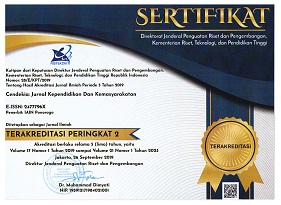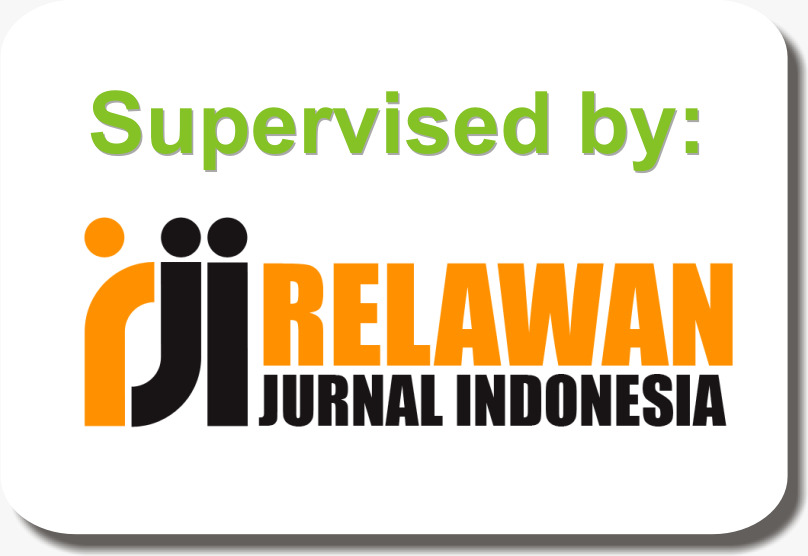Pendidikan Agama Islam di Sekolah Alternatif SD Sanggar Anak Alam (SALAM) Nitiprayan Kasihan Bantul Yogyakarta
DOI:
https://doi.org/10.21154/cendekia.v15i2.1135Keywords:
PAI, SD Sanggar anak Alam, berbasis alamAbstract
This study is aimed at describing the implementation of Islamic Religious Education in the Alternative School of SD SanggarAnakAlam (SALAM) NitiprayanKasihanBantul, Yogyakarta with focus on curriculum, methods, evaluation, and outcomes. This qualitative approach revealed that the implementation of PAI learning in SD SanggarAnakAlam (SALAM) in term of the curriculum used was based on the need, which wasemphasized on social ethics (akhlak). The material taught was based on the environment around the students where they had experiential learning. The results achieved in learning PAI at SD SanggarAnakAlam (SALAM) were first, the cognitive aspects included the ability of students in using the mind. Second, the affective aspects, they applied the values of tolerance, not discriminating friends to learn and mingle. Theywere trained in mutual respect and regard human beings. Third, the psychomotor aspect, they did various activities of planting and caring for the garden, and arranging classes conducted every morning in groups in turn.
هد٠هذا البØØ« إلى عرض ووص٠تطبيق التربية الإسلامية ÙÙŠ المدرسة الابتدائية البديلة " سانغار أناك عالم " ÙÙŠ نيتÙرايان كاسهان بانتول يوغياكرتا بالتركيز ÙÙŠ المنهج الدراسي، وطرق التدريس، والتقويم، والنتائج المØصولة عليها. اتبع هذا البØØ« المدخل الكيÙÙŠØŒ والنتائج منه أن تطبيق تدريس مادة التربية الإسلامية ÙÙŠ هذه المدرسة من Øيث المنهج الدراسي على أساس الØوائج ويكون التركيز ÙÙŠ الأخلاق. وتكون مواد التدريس على أساس البيئة، ويدرس الطلاب من تجاربهم. والنتائج التى Øصل عليها الطلاب بعد تدريس مادة التربية الإسلامية تØتوى على : أولا، الجانب المعرÙÙŠ ÙˆÙيه القدرة على تÙعيل العقل. وثانيا، الجانب العاطÙÙŠØŒ وقد طبق الطلاب قيم Ø§Ù„ØªØ³Ø§Ù…Ø ÙˆÙ„Ø§ ÙŠÙرق بعضهم بعضا ÙÙŠ التعلّم والتعامل والصداقة. ويÙدرّب الطلاب على تقدير وتكريم الغير. وثالثا، الجانب النÙسØركيّ Øيث يمارس الطلاب الزراعة والمØاÙظة على البساتين وتنسيق ما ÙÙŠ غر٠الدراسة من الأشياء والأدوات يوميا بالتبادل Ùيما بينهم.
Downloads
Published
How to Cite
Issue
Section
License
Copyright & License
Please find the rights and licenses in Cendekia: Jurnal Kependidikan dan Kemasyarakatan. By submitting the article/manuscript, the author(s) agree with this policy. No specific document sign-off is required.
1. License
The non-commercial use of the article will be governed by the Creative Commons Attribution license as currently displayed on the Creative Commons Attribution-NonCommercial 4.0 International License.
2. Author(s)' Warranties
The author warrants that the article is original, written by the stated author(s), has not been published before, contains no unlawful statements, does not infringe the rights of others, is subject to copyright that is vested exclusively in the author and free of any third party rights, and that any necessary written permissions to quote from other sources have been obtained by the author(s).
3. User/Public Rights
The spirit of Cendekia: Jurnal Kependidikan dan Kemasyarakatan is to disseminate articles published as free as possible. Under the Creative Commons license, Cendekia: Jurnal Kependidikan dan Kemasyarakatan permits users to copy, distribute, display, and perform the work for non-commercial purposes. Users will also need to attribute authors and Cendekia: Jurnal Kependidikan dan Kemasyarakatan on distributing works in the journal and other media of publications. Unless otherwise stated, the authors are public entities as soon as their articles got published.
4. Rights of Authors
Authors retain all their rights to the published works, such as (but not limited to) the following rights;
- Copyright and other proprietary rights relating to the article, such as patent rights,
- The right to use the substance of the article in own future works, including lectures and books,
- The right to reproduce the article for own purposes,
- The right to self-archive the article,
- The right to enter into separate, additional contractual arrangements for the non-exclusive distribution of the article's published version (e.g., post it to an institutional repository or publish it in a book), with an acknowledgment of its initial publication in this journal (Cendekia: Jurnal Kependidikan dan Kemasyarakatan).
5. Co-Authorship
If the article was jointly prepared by more than one author, any author submitting the manuscript warrants that he/she has been authorized by all co-authors to be agreed on this copyright and license notice (agreement) on their behalf and agrees to inform his/her co-authors of the terms of this policy. Cendekia: Jurnal Kependidikan dan Kemasyarakatan will not be held liable for anything arising due to the author(s) internal dispute. Cendekia: Jurnal Kependidikan dan Kemasyarakatan will only communicate with the corresponding author.
6. Royalties
Being an open accessed journal and disseminating articles for free under the Creative Commons license term mentioned, the author(s) are aware that Cendekia: Jurnal Kependidikan dan Kemasyarakatan entitles the author(s) to no royalties or other fees.
7. Miscellaneous
Cendekia: Jurnal Kependidikan dan Kemasyarakatan will publish the article (or have it published) in the journal if the article's editorial process is completed. The editors of Cendekia: Jurnal Kependidikan dan Kemasyarakatan may modify the paper to a style of punctuation, spelling, capitalization, referencing, and usage that deems appropriate. The author acknowledges that the article may be published so that it will be publicly accessible, and such access will be free of charge for the readers, as mentioned in point 3.

















